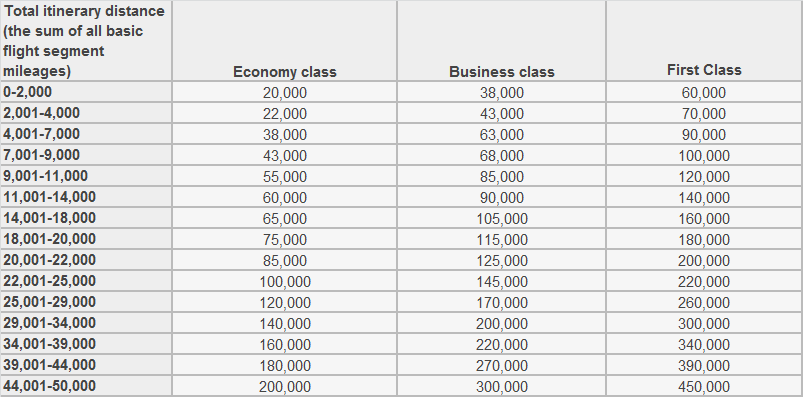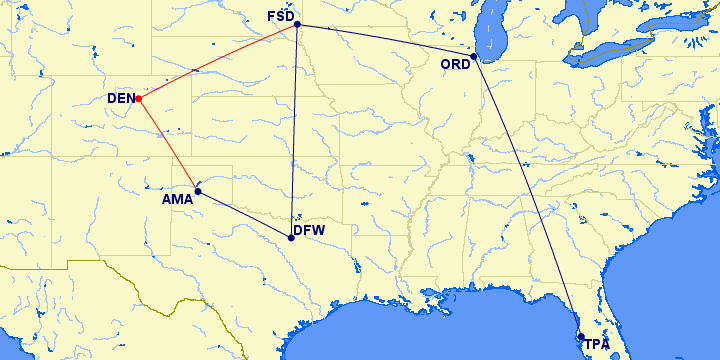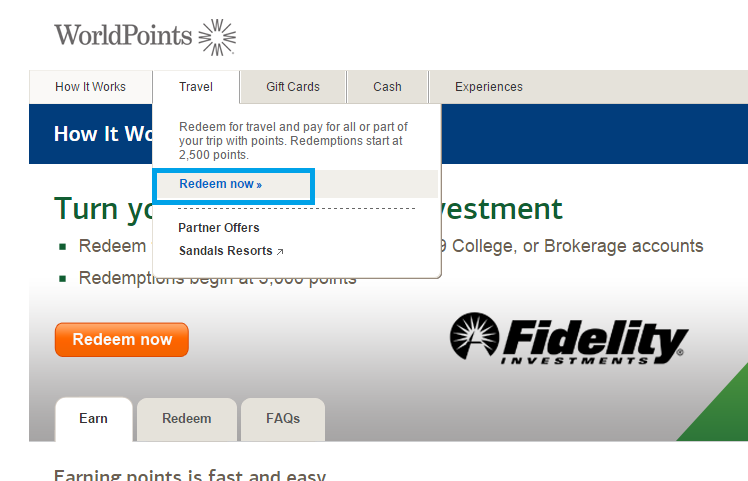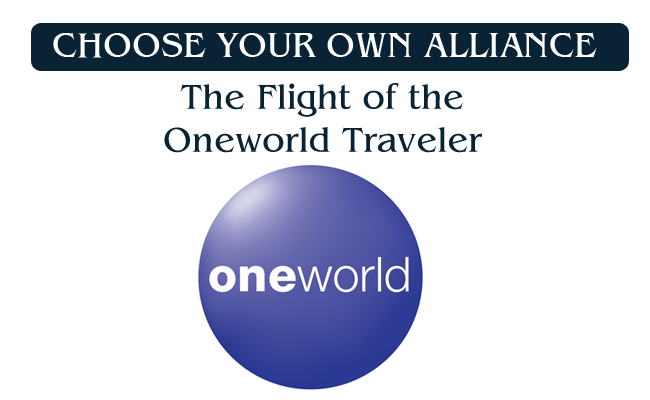Here at Milenomics we always want to spend as few miles as possible to travel as much as possible. We’ve covered the idea of the free one way flight many times here on the site. Discussions whether a free one way is right for you, the always useful AA stopovers, my upcoming Costa Rica Trip, and the Hybrid System have all been great ways to show how/when to book a free one way award.
Last month the Double Down booking was introduced in a guest post from www.creditwalk.ca. This booking technique uses the stopover feature of ANA awards and the fact that many large cities have multiple airports to book free one ways, or even free round trip awards. Today I’ll expand on this using a city with just one major airport, and show you how you can use a similar technique to save.
Smaller Markets Need a Modified System
So much of what works or what doesn’t work is based on where we live. Those of us in Larger cities seem to have it made–multiple airlines, 2 or 3 airports, and all kinds of booking tricks. I realize that a lot of you don’t live in major hubs, and I’m constantly trying to include smaller airports in discussions on Milenomics. I debated writing today’s post about FSD, BHM or PDX, all cities I know readers live in. Ultimately FSD won out, but all three (and many more) work equally with today’s technique.
The basics of the booking method I’ll outline today are that we’ll book our first one way trip with a one way carrier (like WN, or AA/AS with avios, even UA miles would work), and the return will be a 3 one way flights booked Using ANA miles. Because of this there are some restrictions on our flights:
1. Your home airport and your first destination must be served by United (or US Airways until they leave Star Alliance)
2. You could book your first one way with United miles, but in reality your home airport should also be served by AA, AS, B6 or WN.
3. Any 3 of your 4 flight segments should be under 4,000 total miles
4. Your second trip needs to also be flown by United.
That’s it really. With the above four criteria met the only other thing you’ll need is a Demand Schedule. Pulling two flights off of your schedule and booking them together is exactly why we outline all our flights. Today we’ll envision a FSD based traveler wanting to vist AMA (Amarillo, TX) and TPA, Tampa, FL.
FSD-AMA and FSD-TPA
For today’s post we’ll assume we want to visit both of these cities but that we’re somewhat flexible in dates. In the past I’ve argued that Frequent Flyer Miles should really be called Flexible Flyer Miles. Today we’ll use this flexibility to save miles and find dates with available award seats.
The reason for Rule #3, and wanting your 3 flights on United to fall below 4,000 flown miles is because we’re going to be booking the United Flights using ANA miles. If you remember from the creditwalk.ca Double Down posts ANA has a distance based award chart (similar to the way British Airways prices awards):
 Keeping the flight under 4,000 miles means we’ll pay just 22,000 ANA miles for our three legs. With our AMA and TPA trips we’ll be coming close to 4,000 total flown miles. You may want to give yourself some wiggle room so you can connect through cities which add additional miles without bumping your total over 4,000 miles.
Keeping the flight under 4,000 miles means we’ll pay just 22,000 ANA miles for our three legs. With our AMA and TPA trips we’ll be coming close to 4,000 total flown miles. You may want to give yourself some wiggle room so you can connect through cities which add additional miles without bumping your total over 4,000 miles.
Putting 2 Trips Together, Piece by Piece
Trip #1: FSD-AMA-FSD
The first thing we need to do is find our flights to AMA. Because FSD is a small airport We’ll want to book this flight either as a UA oneway (with UA Miles) or with Avios let’s look at our choices:
American Airlines (With Avios):
I did a search for AS flights on alaskaair.com for the week of April 14th and found a good option:
With avios this flight prices at 4,500 + 4,500 Avios. Since booking this with United Miles as a one way would cost 12,500 I won’t even go over that as an option. Our FSD-AMA flight should be booked with Avios on the above AA flights.
Return AMA-FSD on UA. Since the ANA Bookings rely on United award space (and until they leave Star Alliance US Airways) we need to find flights home from AMA-FSD with United. Returning on April 19 looks like it will match up with the above options:
Trip #1 is complete. So far our trips look like this:
Trip #2 FSD-TPA-FSD
We’ve now got to find our flights to Tampa. Playing around with different dates I found the following trip in June:
Putting the trip together we’ve now got two complete trips:
We’re flying 3,791 miles on United, just under our 4,000 mile tier maximum. Now we just need to book the trip.
Booking; ANA.co.jp
One of the most confusing issues with frequent flyer miles is that you can search for the same flights on many different sites, and buy the same flights on many different sites as well. The three above United flights could be bought with United miles on United.com. Doing so would cost 12,500 miles for one way, for a total of 37,500 miles.
On the ANA site we can piece the three legs together as one trip and pay just 22,000 ANA miles (transferring 22,000 Amex MR). Getting to the search screen for this type of search is rather clumsy. We need to navigate to www.ana.co.jp and log into our account. The steps below assume you have miles in your ANA Account, if you see something different make sure you have at least 100 miles in your account.
 After logging in click on “See All Functions,” which will pop up about 25 different options:
After logging in click on “See All Functions,” which will pop up about 25 different options:
 Either of these two “Award Reservation” links will take you to the same place. Ana’s website is like a maze–you sometimes get to a page and don’t remember how you did it.
Either of these two “Award Reservation” links will take you to the same place. Ana’s website is like a maze–you sometimes get to a page and don’t remember how you did it.
From there you’re presented with a page which asks what type of award search you want to do:
 Think we’re done? Nope, still more clicking. “Use Star Alliance Member Airlines” is where we want to go next, which takes us to what looks like a search page. Don’t search for flights on this page:
Think we’re done? Nope, still more clicking. “Use Star Alliance Member Airlines” is where we want to go next, which takes us to what looks like a search page. Don’t search for flights on this page:
 Instead scroll down and click on “Flight Search,” which will take us to a segment by segment search. From here we’ll need to input our flights and dates from our above United searches:
Instead scroll down and click on “Flight Search,” which will take us to a segment by segment search. From here we’ll need to input our flights and dates from our above United searches:
Clicking through to select the same United flights we identified above gives us a final price of 22,000 ANA miles:
Calculating Miles Saved
If we had flown these as two round trips booked with Avios we would have paid 18,000 for the first trip, FSD-AMA, and another 24,000 for FSD-TPA. With any other miles we’d pay 2×25,000 miles. In today’s booking we paid just 9,000 + 22,000 for this booking. On the low end that’s a savings of 11,000 miles, on the high end a savings of 19,000 miles.
Looking at your Demand Schedule and where you live will let you come up with your best practices for when to use this booking method. For smaller airports and/or those only served by United this could be a great way to save miles; book your first one way with United for 12,500 miles (or avios) and the rest as an ANA award.
I wanted to write about this to get readers in smaller cities thinking more about ANA miles, and knowing that they have an option besides avios for short/mid distance flights. Since Membership Rewards points transfer to both BA Avios and ANA Mileage Club, when you can’t find flights with Avios, look for seats on UA, and use those miles.










I appreciate the post for my home town. After the first quick read, however, my head was throbbing. There has to be a simpler way to present the info. (I will reread it and then try to make suggestions.)
Blue: I’ve spent 3 days trying to simplify this. You should have seen the first draft! I went back and forth about even publishing, but spend too much time researching not to. I’ll welcome any type of suggestions you might have, and will try to clean it up some more as well.
Okay, just after I hit the key, I figured out what was bugging me about this post. I know your goal is to get us to think outside the box, wsp. wrt ANA miles, but I kept getting hung up on the example you use.
First, you started the post by describing the parameters for the cost-saving trick. I think most of us think of where we want to go *first*, and then compare the various currencies (miles programs) later. (You allude to this at the end of the post)
Second, the example you chose didn’t ring true. If I knew I wanted to go RT to LAX and also to ANC, I would have used one-way AS award from LAX-PDX (stop)- ANC and then another one-way ANC-PDX (stop) -*somewhere else* (maybe DFW). Again, you mention the fact that there might be some options in currencies, but not until the end.
Bottom line that I get out of this post is that ANA might be a good way to go if you are planning to hit a lot of cities that are closer together. The west coast, including PDX, doesn’t seem to be well positioned to take advantage of this. BUT , maybe there is an area in the world with closer-together cities that is better served by ANA miles, like the Carribean or South America. And, if I was planning a trip there, then ANA would be worth looking at.
In terms of the post itself, I think a reader may need to go through it twice. Hard info to present for sure. Thanks for writing it up.
Blue; I went ahead and replaced the post with a much simpler version I wrote the other day. I really appreciate your feedback. I think I was far too deep into this one, needed someone like you to pull me up for air!
Good stuff. This makes more sense to me now. Nonetheless, I have to say that it’s all very complex.
There is an issue out there that this technique brings up that I’d like to see someone–just one of the frequent flyer bloggers–tackle. The issue is this: how do you know what currency to use to book a ticket? I think if someone can write that up, then it would be the killer post.
Here is the “problem” I’m trying to solve: Assume I have over a million points in various currencies (AA points, Ultimate rewards, Flex points, Alaska companion tickets,….even cash)…I want to fly to AAA, BBB, or CCC. What should I look at spending first? And how should I go about it? Which currencies should I keep a stash of?
Note that this is really how I make decisions. I will look at these three locations and then “do the math” to see if it fits. (The demand schedule idea doesn’t work well for me because, well, I’m lucky to plan out one trip at a time…okay, two max)
For example, I know to look at AA saver fares. I know to spend Delta points before AA or UA (but I also know to keep a stash because they dont charge late award ticketing fees). I think I know when to spend “cashlike” points (like Flexpoints) versus “regular” award tickets. Then there are Avios and tranferring. Blah blah blah.
It gets overwhelming very fast. Especially if you book travel just a few times a year, then all these rules, and spending tricks, and maximizing techniques are difficult to remember when it comes time to book.
What I need to do is come up with a flowchart-type guide. Of course, if some blogger would do that first, he would have the killer blog app (IMO). 🙂
The reason no one has been able to put together a flow chart or anything simpler than this post is that no one size fits all. For instance, if he had chosen a different home city which happens to be served by Southwest it would open far more possibilities.
For sure ANA’s sweet spot is on relatively short trips that total up to 4000 miles.
The answer to ‘How do you know what currency to use to book a ticket?’ – read and study so you are aware of the currencies you should be collecting for your city and travel needs, and then ask away when it’s time to make real plans. Any number of good bloggers are happy to tackle a challenge, and the flyertalk information desk will get you on the right track within a few hours.
@KennyB, I think you nailed it: to maximize your mileage earning/spending, you need to understand what works best for your home base.
That said, there should be a way for me to create a custom flow chart for my home area. Or at least a “checklist” for what to consider…
The counterargument to creating a flowchart is just to not worry so much about maximizing the spending (a “corollary” to the “T-rate rule”?) because it may not be worth the hassle just to save 20% of points (especially if you can manufacture them with some predictability).
Can’t access orig article- PW protected. Forgot how to access these?
M: Unsure what happened there, I took the password off, it never was supposed to be password protected. I think the blog is becoming self-aware. 😉
These articles about the thought process that goes into how to book award flights and which currency to use are really thought-provoking. I imagine most people don’t think about more than one trip at a time, and so this really illustrates the importance of having a demand schedule.
I recently went through a similar analysis with two upcoming trips that will span Thanksgiving and Christmas of this year. It’s a bit easier than what you describe here because I am Bay Area based, but the desired flights I needed were SFO-ICN [stop] ICN-BKK [open jaw] SIN-SFO [stop] SFO-BOS [stop] BOS-SFO. I could pay with money or miles for any/all of these. For purely selfish reasons, I’d be curious as to how you would approach planning for these trips [mainly to compare with what I actually did].
Great info here; gotta reread it all when it isn’t close to midnight and I can think it through. Comments are helpful too! Thanks.
Great post. I enjoyed reading it as well as the Double Down series. An interesting followup (for me anyways) would be the availability of open jaws on this? I tried to play around with this a little bit after the Double Down posts came out, but although it seemed doable in theory, I was never able to get ANA’s website to cooperate.
PWAC: Open Jaw’s are fine with this technique. ANA looks at each one way as a single flight, so you have plenty of flexibility. As an example, for this post be you could fly FSD-AMA with Avios, then return DEN-FSD, stop there and fly FSD-TPA, then go overland to FLL and fly FLL-FSD back all as part of the one 22k ANA booking. You segments would be: DEN-FSD, FSD-ORD-TPA, and FLL-ORD-FSD.
I liked this and would love to see the more complex version you removed.
James: I just saw this comment, sorry for the delay. The more complex version is gone… I didn’t save a copy 🙁